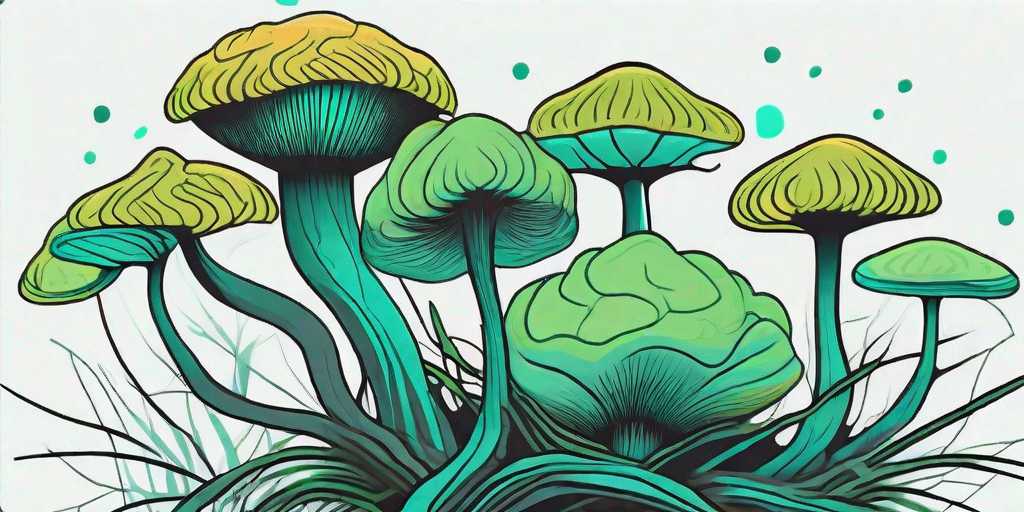
In the world of fungi, there's a new trendsetter in town. Bird's Nest Fungi, with their unique and captivating appearance, are making waves in the natural world. These tiny, cup-shaped fungi, filled with spore-filled 'eggs', are not just a fascinating sight to behold, but are also playing a crucial role in our ecosystem. So, let's dive into the world of Bird's Nest Fungi and discover why they're the latest sensation.
Understanding Bird's Nest Fungi
Before we delve into the nitty-gritty of why Bird's Nest Fungi are becoming a sensation, it's essential to understand what they are. Bird's Nest Fungi belong to the Nidulariaceae family, which is known for its unique, nest-like structure. The 'nests', or peridia, contain tiny 'eggs', or peridioles, which are actually spore-filled structures that aid in the fungi's reproduction.
These fungi are typically small, often not exceeding a few millimeters in diameter. They are commonly found in various parts of the world, usually in damp, organic-rich environments like decaying wood or mulch. Their intriguing appearance and life cycle have made them a subject of interest among nature enthusiasts and scientists alike.
The Life Cycle of Bird's Nest Fungi
The life cycle of Bird's Nest Fungi is as fascinating as their appearance. The 'eggs' in the 'nest' are actually spore sacs that are ejected from the nest when hit by raindrops. The spores then land in a suitable environment, germinate, and grow into a new fungus. This unique method of spore dispersal is known as splash-cup dispersal.
What's even more interesting is that the 'eggs' are attached to the 'nest' by a funicular cord and a sticky hapteron. When the 'egg' lands on a surface, the hapteron sticks to it, and the funicular cord unwinds, allowing the 'egg' to move away from the initial point of impact. This increases the chances of the spores finding a suitable place to grow.
The Rising Popularity of Bird's Nest Fungi
Now that we've understood what Bird's Nest Fungi are and how they reproduce, let's explore why they're becoming increasingly popular. Their unique appearance and intriguing life cycle are certainly factors, but there's more to it than just that.
One of the main reasons for their rising popularity is their role in the ecosystem. Bird's Nest Fungi play a crucial role in decomposition and nutrient cycling. They help break down complex organic materials, releasing nutrients back into the soil. This makes them an essential part of our ecosystem, contributing to soil health and plant growth.
Photogenic Fungi
Another reason for their popularity is their photogenic nature. With their unique, nest-like structure and 'eggs', Bird's Nest Fungi are a favourite among photographers and nature enthusiasts. They add an element of surprise and intrigue to any nature walk or photography session.
Moreover, with the rise of social media platforms like Instagram, these fungi are getting more exposure. Nature photographers and enthusiasts are sharing their Bird's Nest Fungi sightings, sparking interest and fascination among their followers.
FAQs About Bird's Nest Fungi
With the rising interest in Bird's Nest Fungi, there are bound to be questions. So, let's address some of the most frequently asked questions about these fascinating fungi.
- Are Bird's Nest Fungi harmful?
No, Bird's Nest Fungi are not harmful. They are saprophytic, meaning they feed on dead or decaying organic matter. They do not harm living plants or animals. - Can you eat Bird's Nest Fungi?
While Bird's Nest Fungi are not known to be toxic, they are not typically considered edible due to their small size and lack of substantial nutritional value. - Where can I find Bird's Nest Fungi?
Bird's Nest Fungi can be found in various parts of the world, usually in damp, organic-rich environments like decaying wood or mulch.
Conclusion
So, there you have it - a comprehensive guide to the world of Bird's Nest Fungi. These tiny, cup-shaped fungi are not just a fascinating sight to behold, but are also playing a crucial role in our ecosystem. With their unique appearance, intriguing life cycle, and essential role in the ecosystem, it's no wonder that Bird's Nest Fungi are taking the natural world by storm.
So, the next time you're on a nature walk, keep an eye out for these tiny, nest-like structures. Who knows, you might just stumble upon the latest sensation in the world of fungi!















